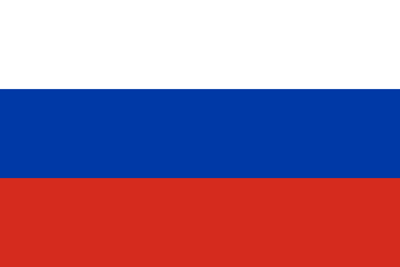TOPIC 4. Structure of the Periodic System of D. I. Mendeleev. Types of Periodicity of the Properties of Chemical Elements.
Example 1: What are the highest and lowest oxidation states of arsenic, selenium, and bromine?
Write formulas for the compounds of these elements corresponding to these oxidation states.
Solution: The highest oxidation state of an element is determined by the group number of the element in the periodic table of D. I. Mendeleev. The lowest oxidation state is determined by the hypothetical charge acquired by the atom when it gains the number of electrons necessary to form a stable octet (ns2np6).
These elements belong to the main groups V, VI, VII, respectively, and have the following electronic structure for the outer energy level: s2p3, s2p4, s2p5. Therefore, the oxidation states of arsenic, selenium, and bromine in compounds are as follows:
As +5 (highest), -3 (lowest) --- As2O5, AsH3;
Se +6 (highest), -2 (lowest) --- SeO3, Na2Se;
Br +7 (highest), -1 (lowest) --- KBrO4, KBr.
Example 2: Which of the elements from the fourth period, manganese or bromine, exhibits stronger metallic properties?
Solution: The electron configurations of these elements are:
25Mn 1s22s22p63s23p64s23d5
35Br 1s22s22p63s23p64s23d104p5.
Manganese is a d-block element of the VII group in the transition metals, while bromine is a p-block element in the VII group of the main group. At the outer energy level, manganese has two electrons, while bromine has seven.
Typical metals are characterized by having a small number of electrons in their outer energy level, leading to a tendency to lose these electrons. They exhibit only reducing properties and do not form negative ions. Elements whose outermost electrons exceed three in number tend to have an electron affinity, resulting in a negative oxidation state and the formation of negative ions. Thus, manganese, like all metals, exhibits only reducing properties, while bromine, which has weak reducing properties, is more likely to act as an oxidizing agent. Therefore, the metallic properties are more pronounced in manganese.
Tasks for Independent Solution
-
Provide the modern formulation of the periodic law. How does it differ from the one given by D. I. Mendeleev?
-
The discovery of which three elements was a triumph of the periodic law? How accurately did the properties of these elements and their simplest compounds match the properties predicted by D. I. Mendeleev?
-
Show how the periodic law illustrates and confirms one of the general laws of the development of nature—the law of the transition from quantity to quality.
-
How does the atomic structure theory explain the periodicity in the changes of chemical properties of elements?
-
What is the physical meaning of the atomic number, and why are the chemical properties of an element ultimately determined by the charge of its nucleus?
-
Explain three cases (indicate them) of deviations from the sequence of elements in the periodic table based on the increasing atomic masses.
-
What is the structure of the periodic table? Periods, groups, and subgroups. The physical meaning of the period and group numbers.
-
Under which circumstances do the capacity of an energy level and the number of elements in a period: a) coincide; b) not coincide? Explain the reason.
-
Which quantum numbers correspond to the period numbers? Provide a definition of a period based on the atomic structure theory.
-
Which periods of the periodic table are called small, and which are called large? What determines the number of elements in each period?
-
Indicate the valence energy sublevels in the following electron configurations of neutral atoms: a) [KL]3s23p1; b) [K]2s22p5; c) [KLM]4s24p3; d) [KL]4s23d8.
-
Where are the noble gases located in the periodic table? Why did they previously belong to group zero, and what were they called?
-
Why is hydrogen placed in both Group I and Group VII of the periodic table? What justification can be given for each variant?
-
How do the properties of the elements of the main subgroups change across periods and groups? What is the cause of these changes?
-
What is the position of two elements in the periodic table, one of which has the highest ionization potential and electronegativity, while the other has the lowest values of these properties?
-
In the atoms of which elements does the so-called "electron gap" occur? Explain the reason for this effect.
-
Under normal conditions, only 11 chemical elements exist in the free state as gases, and 2 elements as liquids. Provide the symbols and names of these elements.
-
The configuration of valence electrons in the atoms of two elements is given by the formulas: a) 3s23p2 and 4s23d2; b) 4s23d3 and 4s23d104p3. In which periods and groups are these elements found? Should they differ in their properties if they have the same number of valence electrons?
-
Knowing the number of elements in each period, determine the position of the elements in the periodic table and their main chemical properties based on the atomic numbers: 35, 42, and 56.
-
Despite his own formulation, D. I. Mendeleev placed tellurium before iodine, and cobalt before nickel. Explain why.
-
What explains the general trend of decreasing atomic radii with increasing atomic number in a period and increasing atomic radii with increasing atomic number in a group?
-
On what basis are chromium and sulfur placed in the same group in the periodic table? Why are they placed in different subgroups?
-
On what basis are phosphorus and vanadium placed in the same group in the periodic table? Why are they placed in different subgroups?
-
Which series of elements is arranged in order of increasing atomic radii: a) Na, Mg, Al, Si; b) C, N, O, F; c) O, S, Sc, Fe; d) I, Br, Cl, F.
-
What are the similarities and differences between the atoms of: a) F and Cl; b) N and P?
Physical Exercise Breaks During Drawing Lessons
25 Years of Our Beloved School: A Heartfelt Reunion and Celebration
Sponsorship Support Provided to Secondary School No. 19 with Advanced Educational Programs in the 2014–2015 Academic Year
Caution: Thin Ice – Stay Safe Near Water in Winter

 Deutsch
Deutsch
 Francais
Francais
 Nederlands
Nederlands
 Svenska
Svenska
 Norsk
Norsk
 Dansk
Dansk
 Suomi
Suomi
 Espanol
Espanol
 Italiano
Italiano
 Portugues
Portugues
 Magyar
Magyar
 Polski
Polski
 Cestina
Cestina
 Русский
Русский